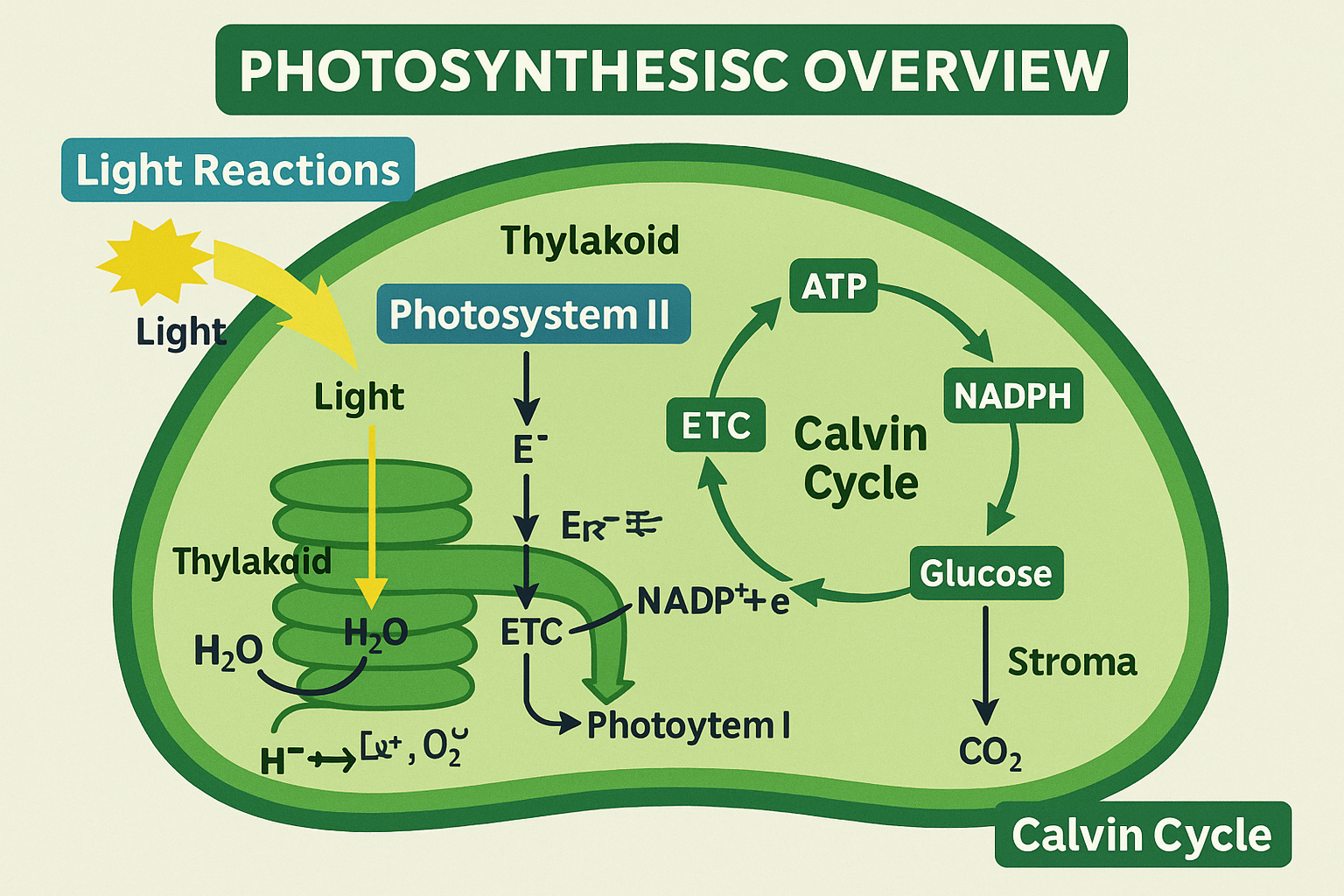🌿 DAT Photosynthesis Made Simple: Light Reactions and Calvin Cycle Explained
Photosynthesis is a cornerstone of cellular energy transformation, essential for plant survival and food production.
On the DAT, expect questions that test your understanding of inputs, outputs, and chloroplast structure.
In this blog, we’ll break down the light reactions, Calvin cycle, and the flow of energy through ATP and NADPH.
📍 Where It Happens: The Chloroplast
Thylakoid Membranes: Site of light reactions
Stroma: Site of the Calvin cycle
Contains chlorophyll, pigment responsible for light absorption
⚡ Light-Dependent Reactions (Thylakoids)
| Component | Function |
|---|---|
| Light Energy | Excites electrons in Photosystem II |
| H₂O | Split to release electrons, H⁺, and O₂ (photolysis) |
| Photosystem II | Passes electrons through ETC to generate ATP |
| Photosystem I | Re-excites electrons to reduce NADP⁺ → NADPH |
| Products | ATP, NADPH, and O₂ |
📌 DAT Tip: The O₂ you breathe comes from water, not CO₂!
🌱 Light-Independent Reactions: The Calvin Cycle (Stroma)
Input: ATP, NADPH, CO₂
Main Enzyme: RuBisCO
Output: Glucose (or G3P)
Does not require light directly, but depends on products of light reactions
Calvin Cycle Phases:
Carbon Fixation
Reduction (G3P formation)
Regeneration of RuBP
🧠 Photosynthesis Equation (You Must Know)
🧪 DAT Question Examples
“Which molecule is the final electron acceptor in the light reactions?”
“What enzyme fixes carbon dioxide?”
“Where is ATP used during photosynthesis?”
🎯 Call to Action
Ready to master every pathway?
KOTC can help you:
Diagram light and dark reactions
Drill enzyme names like RuBisCO and ATP synthase
Compete in multiplayer quizzes on chloroplast structure
Use adaptive flashcards to retain photosystem steps
✅ Summary
Photosynthesis occurs in the chloroplast and involves:
Light reactions (in thylakoids) → ATP + NADPH
Calvin cycle (in stroma) → glucose
Know what goes in, what comes out, and where
Understand energy flow and molecule conversions
Frequently Asked Questions (FAQs)
-
Aim for 4-6 focused hours, ensuring you incorporate breaks to avoid burnout.
-
Practice mindfulness techniques, take practice exams under realistic conditions, and maintain a balanced lifestyle.
-
Set short-term goals, seek support from mentors, and reward yourself for small achievements.
-
Regular exercise improves focus, reduces stress, and enhances overall mental clarity.
-
KOTC offers personalized learning tools, gamification features, and adaptive question banks to help students stay on track without burnout.


